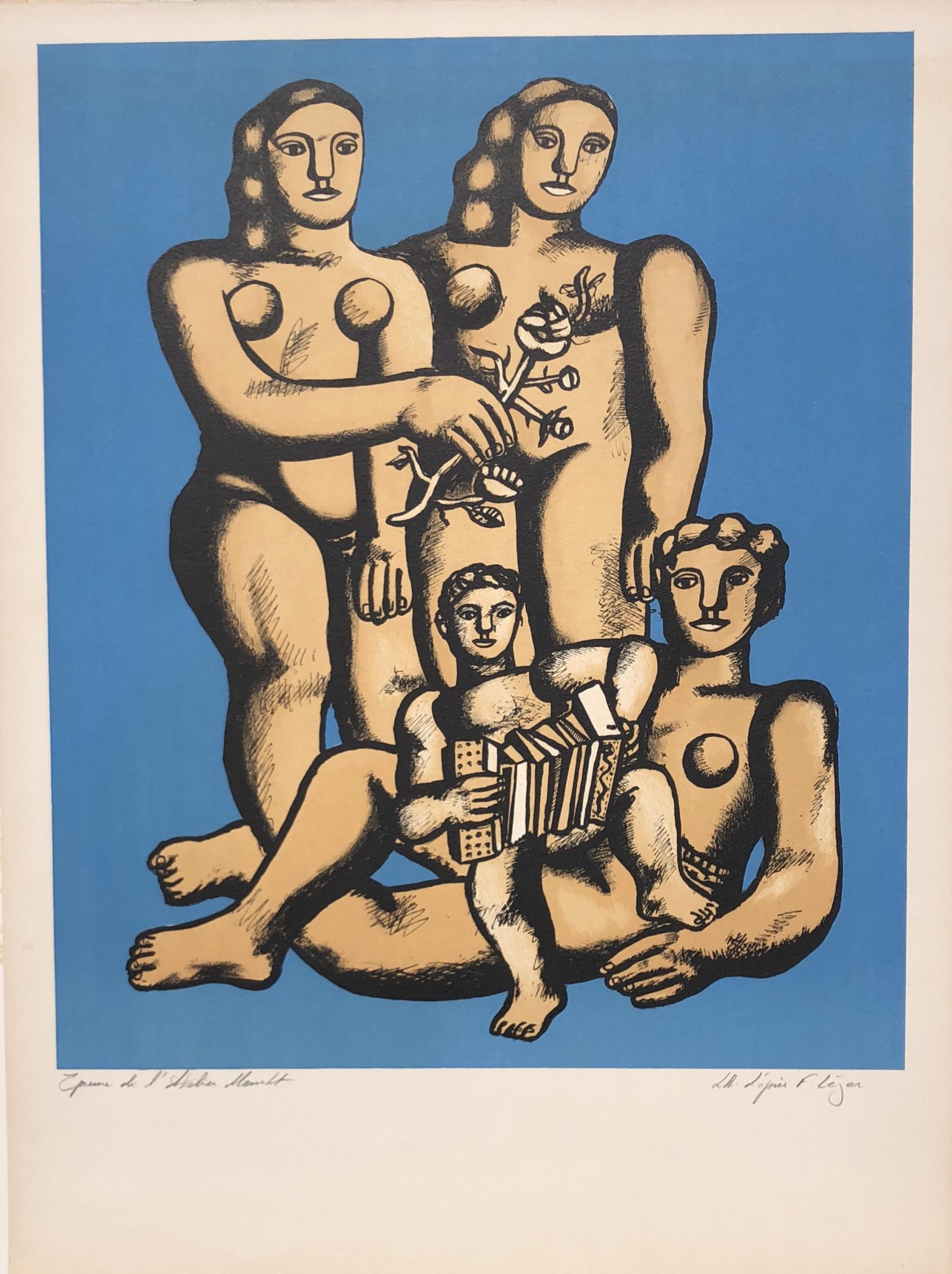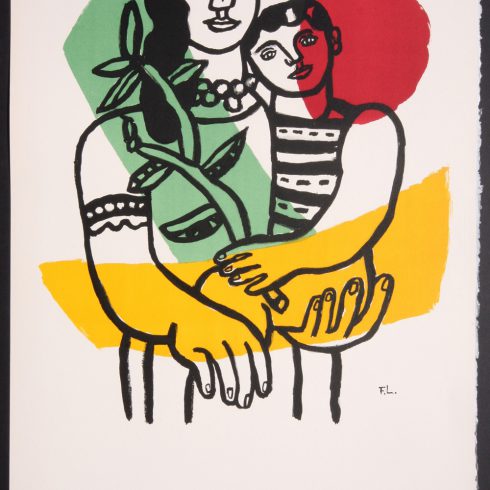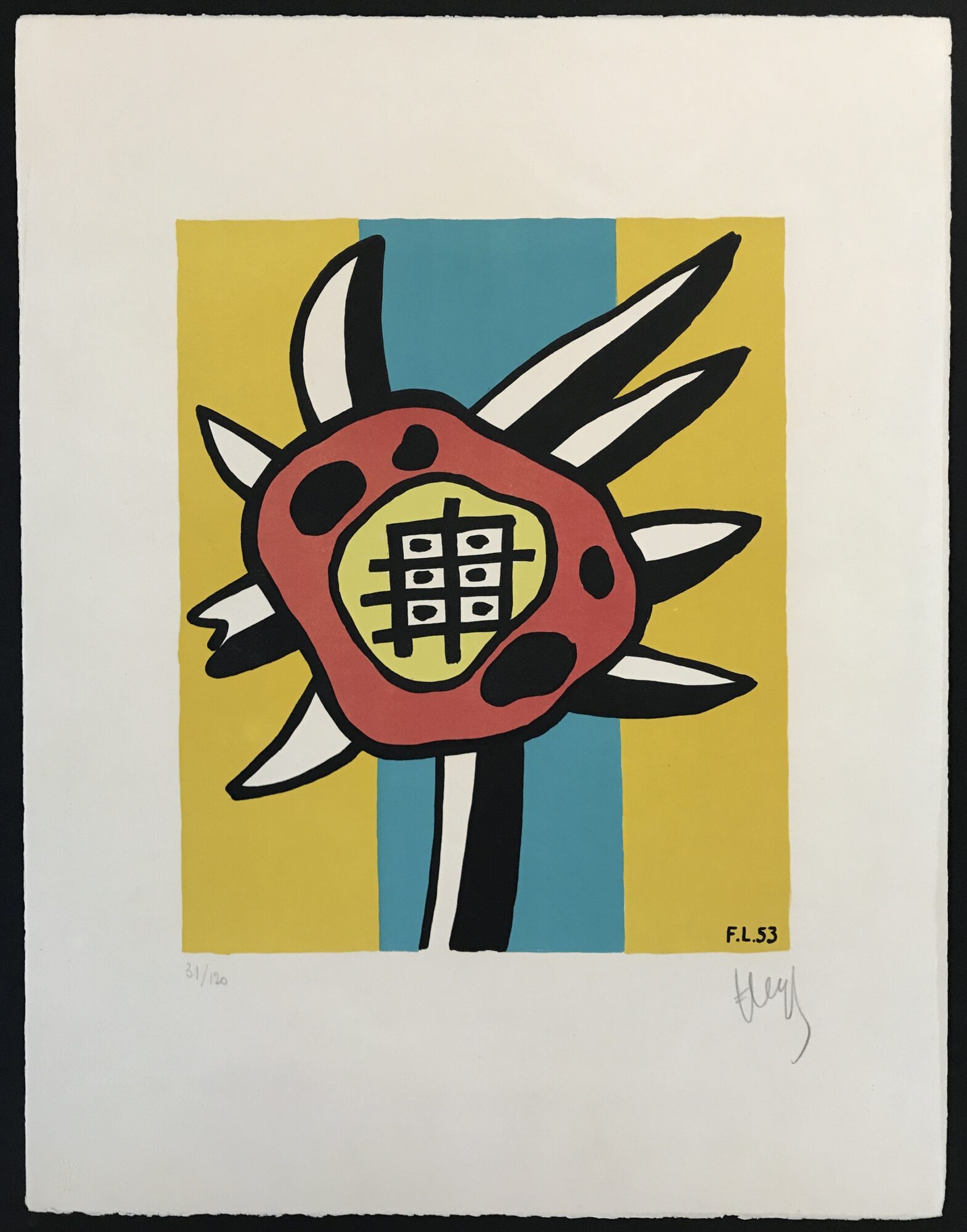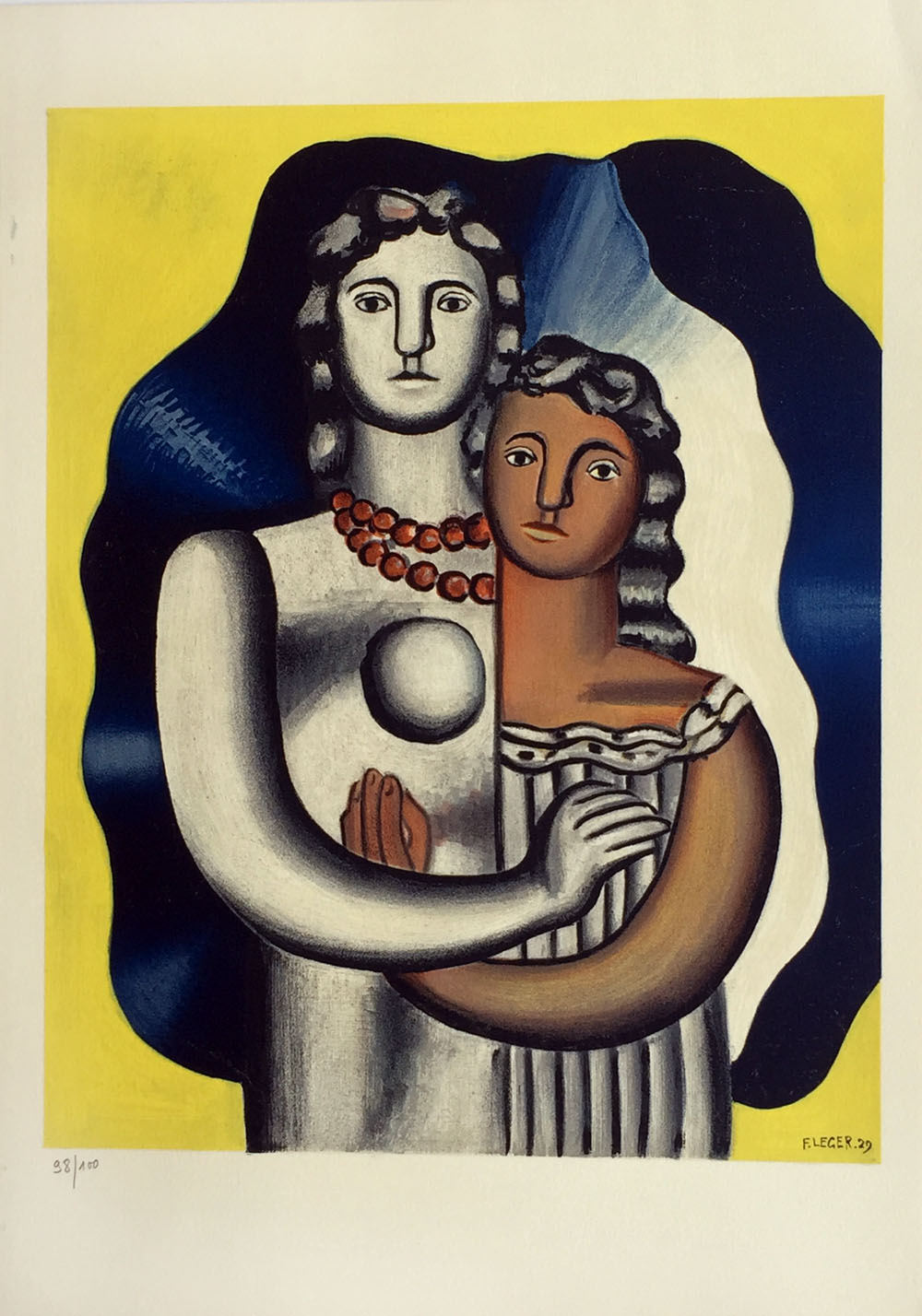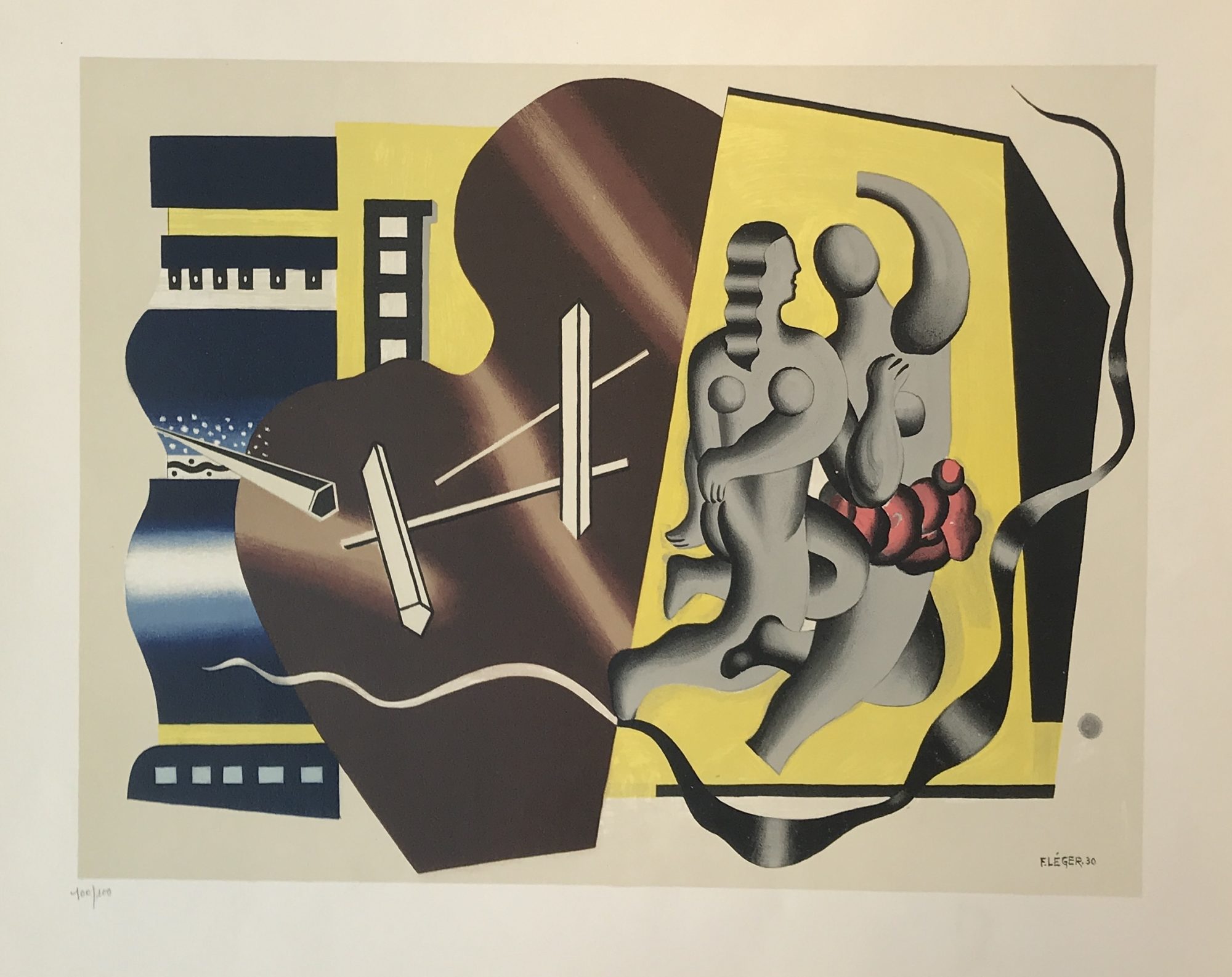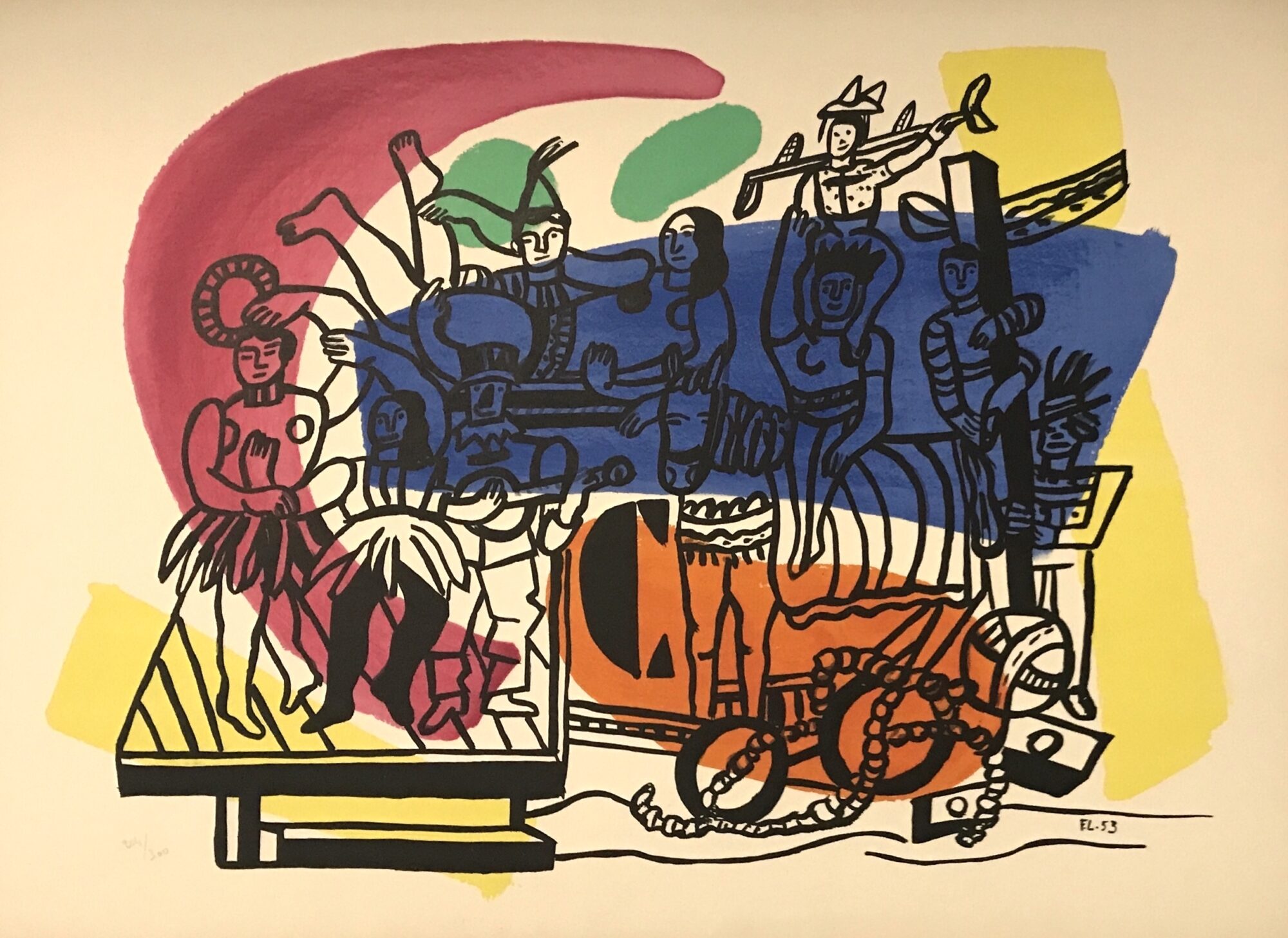Fernand Leger – The Accordionist’s Family
Fernand Leger, The Accordionist’s Family 1950 is a colored Lithograph. Printed by Fernand Mourlot, Paris. This print has the words “Epreuve de l’Atelier Mourlot” annotated on the lower left and “Litho. d’apres F. Leger” annotated by Mourlot on the lower right of the print.
Léger founded the Académie de l’Art Moderne at his studio in 1924 with fellow French Cubist painter Amédée Ozenfant (1886–1966). The Académie lasted until 1939, and during this time he developed Tubism—a style in which human body parts and architectural elements are rendered with three-dimensional shading to look like voluminous tubes and cylinders. Also in 1924, he completed his first film, Ballet Mécanique. Léger relocated to New York to escape World War II, and taught a lecture series at Yale which many artists attended, influencing New York School painters. Léger returned to France in 1946, where he became intensely-involved with the Communist Party. In the 1950s, the series paintings Builders, Campers, and The Big Parade illustrated a concern for the common man, inspired by Léger’s view of electrical workers atop poles. In his effort to have his works seen by the common man he temporarily installed several of the Builders paintings in the canteen at the Renault factory near Paris, where they met mixed reactions. He continued to travel and produce works in various media until his death in 1955.
Influenced by the chaos of urban spaces and his interest in brilliant, primary color, Léger sought to express the noise, dynamism, and speed of new technology and machinery often creating a sense of movement in his paintings that captured the optimism of the pre-World War I period.
During the 1920s he branched out into other methods of creative expression. He illustrated books, made sets and costumes for ballet and theater performances, and even made the film, Ballet Mechanique, in 1924. It was also in 1924 that he founded a free school for modern art in Paris with Amédée Ozenfant where he taught alongside Marie Laurencin and Aleksandra Ekster.
| Title | The Accordionist’s Family |
|---|---|
| Year | 1950 |
| Medium | Lithograph in Colors |
| Edition | Proof |
| Size | 25.5 x 19.25 (in) 64.77 x 48.9 (cm) |
| Price | Price upon Request |
Description
Fernand Leger, The Accordionist’s Family 1950 is a colored Lithograph. Printed by Fernand Mourlot, Paris. This print has the words “Epreuve de l’Atelier Mourlot” annotated on the lower left and “Litho. d’apres F. Leger” annotated by Mourlot on the lower right of the print.
Léger founded the Académie de l’Art Moderne at his studio in 1924 with fellow French Cubist painter Amédée Ozenfant (1886–1966). The Académie lasted until 1939, and during this time he developed Tubism—a style in which human body parts and architectural elements are rendered with three-dimensional shading to look like voluminous tubes and cylinders. Also in 1924, he completed his first film, Ballet Mécanique. Léger relocated to New York to escape World War II, and taught a lecture series at Yale which many artists attended, influencing New York School painters. Léger returned to France in 1946, where he became intensely-involved with the Communist Party. In the 1950s, the series paintings Builders, Campers, and The Big Parade illustrated a concern for the common man, inspired by Léger’s view of electrical workers atop poles. In his effort to have his works seen by the common man he temporarily installed several of the Builders paintings in the canteen at the Renault factory near Paris, where they met mixed reactions. He continued to travel and produce works in various media until his death in 1955.
Influenced by the chaos of urban spaces and his interest in brilliant, primary color, Léger sought to express the noise, dynamism, and speed of new technology and machinery often creating a sense of movement in his paintings that captured the optimism of the pre-World War I period.
During the 1920s he branched out into other methods of creative expression. He illustrated books, made sets and costumes for ballet and theater performances, and even made the film, Ballet Mechanique, in 1924. It was also in 1924 that he founded a free school for modern art in Paris with Amédée Ozenfant where he taught alongside Marie Laurencin and Aleksandra Ekster.
Additional information
| Title | The Accordionist’s Family |
|---|---|
| Year | 1950 |
| Medium | Lithograph in Colors |
| Edition | Proof |
| Size | 25.5 x 19.25 (in) 64.77 x 48.9 (cm) |
| Price | Price upon Request |


